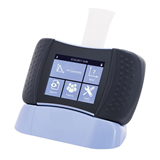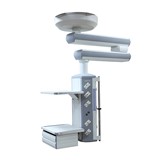Key Takeaways
- Complaints are free data. Each patient complaint is direct feedback highlighting a friction point. Ignoring them ignores free consultancy.
- Most complaints are about communication, not clinical care. Australian data shows most relate to communication, waiting times, and billing – often easier to fix.
- Make it easy to complain. Offer multiple channels (online, box, email) and train staff to handle verbal complaints constructively. If patients can't complain to you, they'll complain about you online.
- Track and trend your complaints. Log complaints centrally and review quarterly to identify recurring themes pointing to systemic problems.
- Closing the loop builds trust. Communicate changes made based on feedback. A simple "You spoke, we listened..." sign turns a negative into a positive.
- It's an accreditation requirement. A clear complaints process is mandatory under RACGP Standards. Viewing complaints positively aids compliance.
- Train for empathy, escalate with clarity. Equip your team with listening skills and a complaint handling model (like HEAT), plus clear escalation protocols.
- Internal resolution protects your online reputation. An effective internal process making patients feel heard is your best defence against negative online reviews.
Introduction: Unearthing the value in patient dissatisfaction
No practice manager enjoys receiving a patient complaint. In the busy world of Australian healthcare in late 2025, the natural reaction is often defensive. But what if that complaint wasn't a problem, but an opportunity for valuable data pointing to where your practice could improve?
Formal complaints are rising, often driven by poor communication. Shifting your mindset to view complaints not as threats, but as a "goldmine" of free, actionable insights is a powerful strategy. This guide shows how to harness patient feedback to drive improvements in experience, efficiency, and quality.
Reframing complaints from headache to head start
A cultural shift is the first step: view complaints as valuable learning opportunities, not personal attacks.
Why embrace complaints?
- They highlight blind spots your team might miss.
- They provide specific, actionable data on incidents or processes.
- Directly addressing concerns prevents escalation to external bodies or negative online reviews.
- Actively listening demonstrates patient-centred care.
Creating accessible and safe feedback channels
Patients need easy and safe ways to provide feedback. Offer multiple channels:
- Direct conversation: Train staff to listen empathetically and escalate appropriately.
- Suggestion box: A simple, visible box with forms.
- Dedicated email address: Monitored by the practice manager.
- Online form: Simple, anonymous-optional, on your website.
Promote your process clearly via practice info sheets, your website, and waiting room posters. Reassure patients that feedback is confidential and won't affect their care.
Beyond anecdotes analysing complaint trends
The real value emerges when you analyse patterns over time. Log every complaint centrally (spreadsheet or PMS/CRM), recording date, source, summary, staff involved, action taken, and resolution date.
Review trends quarterly. Categorise complaints (communication, wait times, billing, etc.). What themes recur? Are specific staff or times frequently mentioned? This analysis shifts you from reactive fire-fighting to proactive problem-solving.
Digging deeper root cause analysis in practice
Once a trend emerges, find the underlying cause using the simple "5 Whys" technique.
Realistic scenario: The billing complaint trend
Recurring complaints arise about unexpected out-of-pocket costs despite quotes.
- Symptom: Unhappy patients at billing.
- Why 1? Bill higher than quote.
- Why 2? The quote didn't cover consumables accurately.
- Why 3? Admin staff unsure which consumables would be used.
- Why 4? No standardised list linking procedures to consumables.
- Why 5 (Root Cause)? Lack of a formal system for costing procedures.
Solution: Create standardised procedure packs and update quoting templates in the PMS, addressing the root cause to ensure future accuracy.
Closing the loop action and communication
Act on the insights gained and communicate these actions.
- Implement tangible changes: Revise billing processes, provide extra staff training, adjust scheduling, or update patient information materials.
- Communicate improvements: Let patients know you've listened via waiting room signage ("You spoke, we listened! We've improved...") or your newsletter/website.
- Share with your team: Discuss trends and changes in team meetings to foster a culture of continuous improvement.
The compliance connection accreditation and patient rights
A robust complaints process is mandatory.
- RACGP Accreditation: The Standards (5th edition) require an accessible feedback and complaints process (Criterion C1.3). Your log and actions are key evidence.
- Patient Rights: State/territory Health Care Complaints Commissions exist. A good internal process often resolves issues before external escalation.
Viewing complaints through this compliance lens underscores their importance.
Training your team to handle complaints constructively
Your front-desk team's response sets the tone. Specific training is essential risk management.
- Active Listening & Empathy: Train staff to listen fully, acknowledge feelings ("I can hear how frustrating this has been"), and avoid defensiveness.
- A Simple Framework (HEAT): Hear them out, Empathise, Apologise (for their experience), Take action.
- Knowing When to Escalate: Define clear protocols for escalating to a manager (e.g., if aggression occurs, the issue is complex, or the patient requests it). Ensure staff feel supported.
- Emotional Debrief: Allow staff to briefly debrief with a manager after difficult interactions to manage stress and prevent burnout.
The link between internal complaints and online reputation
Your internal complaints process directly impacts your online reputation. A robust system is your best defence against negative reviews.
- Internal resolution prevents public escalation: Patients who feel heard internally are less likely to post negative reviews on Google or Healthshare.
- Use complaint data to inform online responses: Insights from your log help craft more informed and empathetic public responses to negative reviews.
- Proactively capture feedback before they leave: Use QR code surveys or SMS follow-ups to identify unhappy patients early, allowing direct resolution and potentially preventing a negative review.
Conclusion
Patient complaints are inevitable but offer a powerful engine for improvement. By shifting your perspective, systematically collecting and analysing feedback, acting on insights, and communicating transparently, you turn dissatisfaction into loyalty. Practices that actively listen build the strongest reputations and the most resilient businesses.











-160x160-state_article-rel-cat.png)






